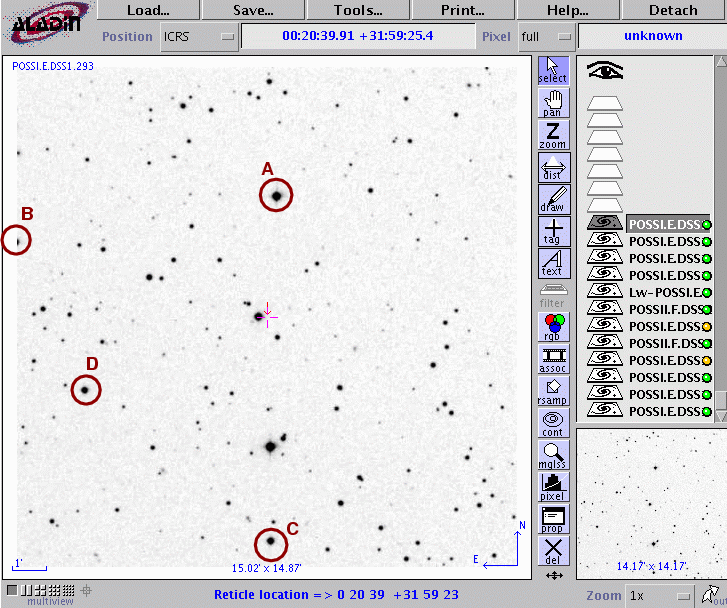
On the night of UT Oct 15, 2007, the SDSS Photometric Telescope ("PT" for short) took a series of exposures of the field around WASP-1 . This turned out to be a very nice dataset.
Notes from the night
This is a chart of the field. WASP-1 is the bright star indicated by the crosshairs. The labelled stars will appear in later graphs.

The host star of WASP-1 has a magnitude V=11.79, according to WASP-1b and WASP-2b: Two new transiting exoplanets detected with SuperWASP and SOPHIE.
Following the procedures outlined by Kent Honeycutt's article on inhomogeneous ensemble photometry, I used all stars available in each image to define a reference frame, and measured each star against this frame. You can find the software package used to do the ensemble photometry online; it's free!
The night was clear -- as you'll see below. The graph below shows the amount by which instrumental magnitudes from each image needed to be shifted to match the ensemble reference. On a clear night, this graph would show a straight horizontal line. Note that the variation in this data is only 0.02 mag!
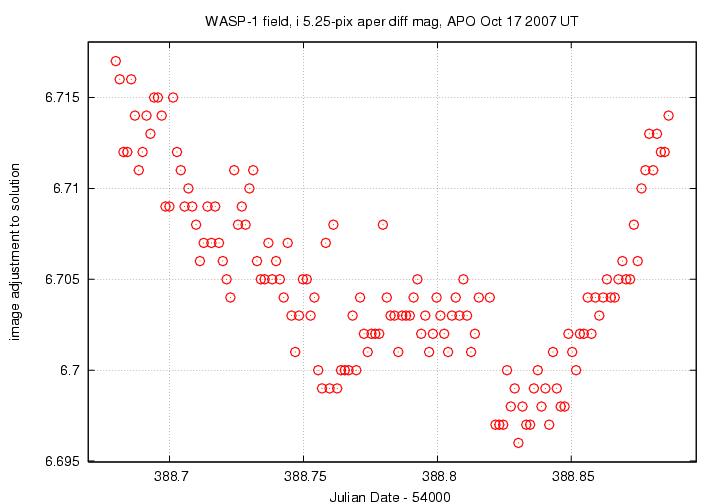
Below is a graph of the scatter in differential magnitude versus magnitude in the ensemble solution. I marked all stars brighter than differential magnitude 2.0, as "saturated," so that they would not influence the ensemble solution.
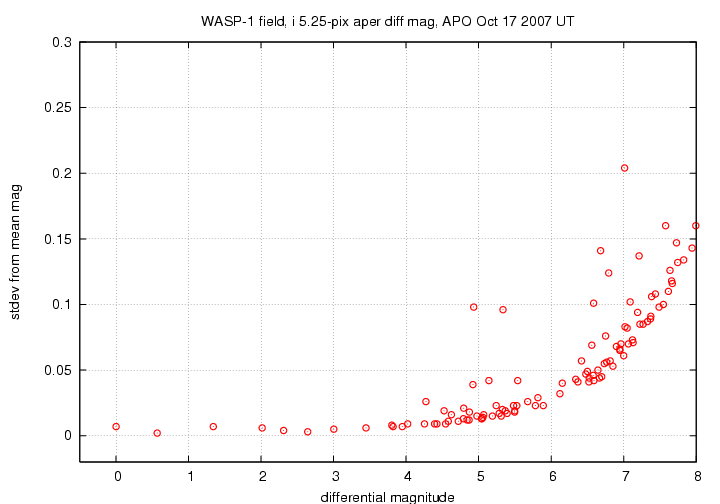
WASP-1 is the star at differential mag 1.34; it shows a very small excess of scatter than neighboring stars of the same brightness. The "noise floor" in these measurements is about 0.003 mag -- very nice.
Below are the light curves for the target (green symbols) and four comparison stars in the field.
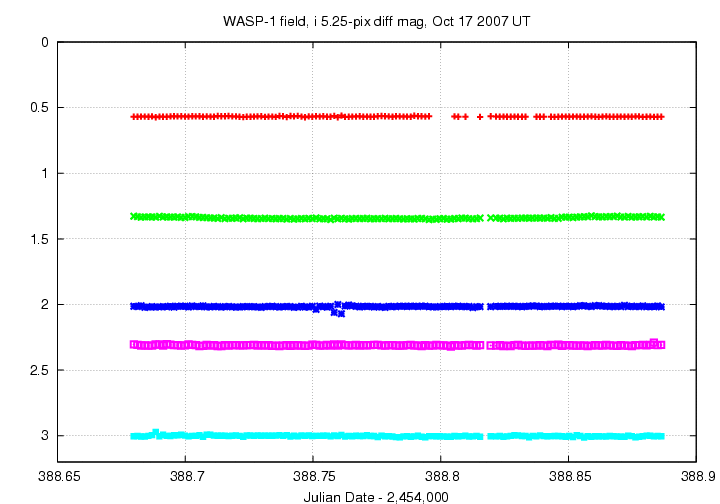
In this closeup, I have shifted the data for star C to move them closer in magnitude to the target.
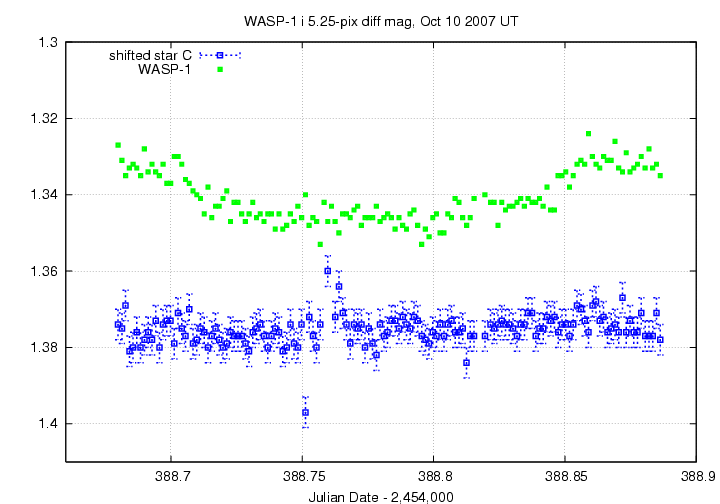
An ephemeris grabbed from transitsearch.org predicts for this night
----------------------------------------------------------------------------------------
Begin Transit Window PREDICTED CENTRAL TRANSIT End Transit Window
All Times UT
HJD Year M D H M
2454388.71 2007 10 15 4 55 2454388.79 2007 10 15 6 53 2454388.87 2007 10 15 8 50
----------------------------------------------------------------------------------------
The ingress of UT 2007 Oct 15 04:55:00 corresponds to JD 2,454,388.705, at the same time as the observations suggest. The ephemeris predicts an end to the transit at UT 2007 Oct 15 08:50:00 = JD 2,454,388.868, which is close to the time one would estimate from the light curve.
You can grab the measurements for your own analysis. Below is a table with three flavors of time, plus the differential magnitude of WASP-1 and an estimate of the uncertainty in each measurement. I show the first few lines of the file to give you an idea of its format.
# Measurements of WASP-1 made with APO PT, Oct 15, 2007 UT. # Each exposure 40 seconds long in SDSS i-band; # Tabulated times are midexposure and accurate only to +/- 1 second (??). # 'mag' is a differential magnitude based on ensemble photometry # using a circular aperture of radius 5.25 arcseconds. # # UT day JD-2,450,000 HJD-2,450,000 mag uncert Oct15.67991 4388.67991 4388.68503 1.327 0.005 Oct15.68135 4388.68135 4388.68647 1.331 0.005 Oct15.68276 4388.68276 4388.68788 1.335 0.005Warning: the times in this datafile have a small systematic error. I assumed the FITS header time was the shutter open time, so added half the exposure time to it. The FITS header time is instead roughly the shutter CLOSING time. My calculated times are therefore later than correct by about the duration of one exposure.
Last modified 10/16/2007 by MWR.